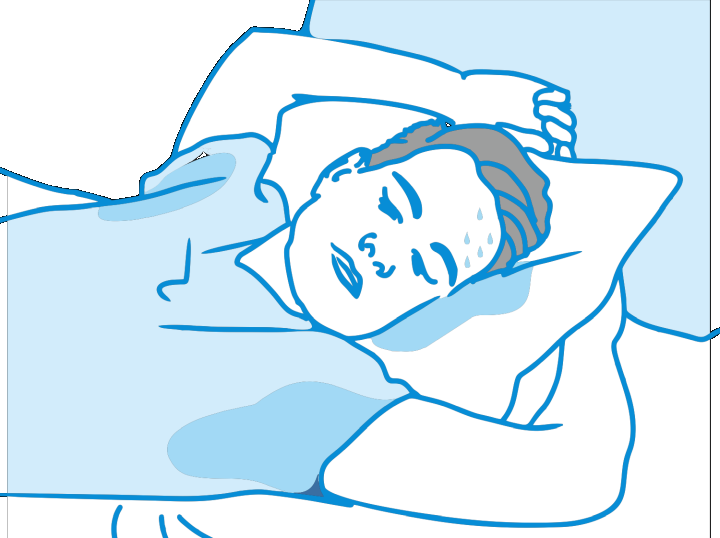To provide services at the highest level, we use cookies. Using the website requires you to choose settings related to their storage on your device. If you want to know what each type of cookie is used for, click the Details button below.
What mattress to choose for sweat at night?20 lipca 2023 |

Night sweats can be a natural response of the body for temperature regulation. However, if the sweating is excessive, regular, and accompanied by other concerning symptoms such as fever, weight loss, fatigue, or mood changes, it should prompt consultation with a doctor. In some cases, they may be a symptom of certain conditions or hormonal disorders. It is also important to maintain sleep hygiene by ensuring a proper mattress, pillow, and bedding.
Profuse night sweats can be associated with various factors such as excessive room temperature, an unsuitable mattress, or hormonal changes. Additionally, profuse night sweats can be caused by menopause in women, infections, metabolic diseases, mental disorders, or stress. If you notice increased sweating at night, it is advisable to consult a doctor to identify the cause and treat it appropriately.
There are several ways that can help reduce night sweats. First and foremost, maintain an appropriate bedroom temperature through good ventilation and the use of lightweight, breathable bedding. Choose a mattress that provides good airflow and moisture-wicking properties. Avoid consuming heavy meals before bedtime, as they can increase metabolism and trigger hot flashes. Additionally, practice relaxation techniques such as mindfulness, meditation, or yoga to reduce stress and improve sleep quality.
Yes, the choice of a suitable mattress can affect night sweats. Mattresses made of open-cell foams, such as high-resilience foam, have better air permeability and promote airflow around the body. This can help maintain an appropriate body temperature and reduce nighttime sweating. On the other hand, mattresses made of materials that do not allow air circulation can contribute to body heat retention and increased sweating.
To overcome night sweats, focus on sleep hygiene. Create favorable sleeping conditions by maintaining an appropriate room temperature and using lightweight bedding. Choose a mattress that provides good airflow, such as the functional Osaka Air mattress. Additionally, avoid heavy and fatty meals before bedtime and limit the consumption of alcohol and caffeine, including those found in tea or yerba mate. If night sweats are intense and accompanied by other concerning symptoms, consult a doctor for diagnosis and treatment of any underlying conditions or hormonal disorders. Also, remember that every individual is different, so it's worth experimenting with different methods and adjusting them to your individual needs to find effective solutions for night sweats. However, if the problem persists or other symptoms worsen, it is always advisable to consult a doctor.